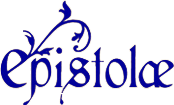Euphrosyne Mstislavna of Kiev
Overview
Biography
(See also Genealogical Table(s): 2.2.)
Euphrosyne was a daughter of Mstislav Vladimirovich the Great (+ 1132) and his second wife, an unnamed daughter of a Novgorod official, Dmitrii Zavidovich. In about 1146, she married Géza II, king of Hungary (reigned 1141-62); they had three sons, Istvan III (whose godfather was Louis VII of France), Béla III, and Géza, and at least two daughters, Elisabeth and Odola, who married sons of Vladislav II of Bohemia. After the death of Géza II, Euphrosyne led the alliance to support her son against his paternal uncles who claimed the throne in turn, supported by the Byzantine emperor Manuel Komnenos. Istvan fled to Austria, then to Bratislava, followed by his mother; they hired mercenaries in Austria, so when one uncle died within a year, and a second was crowned, they were able to defeat him in battle. But as part of the peace negotiations, the second son, Béla, was sent as a hostage to Constantinople, where he was engaged to the emperor’s daughter Maria and campaigned against his brother.
Euphrosyne shared royal authority with Istvan during his reign, as evidenced in various charters from István, issued “together with the lady queen, my mother,” (una cum domina regina matre mea).2 She was also involved in church governance, requesting with her son the transfer of a bishop, reluctantly approved by pope Alexander III, to ensure loyalty to the royal family, and supporting papal reforms. István died in 1172, at age 25 and was succeeded by his brother Béla (who reigned from 1172 to 1196); he was rumored to have poisoned István.
Apparently, Euphrosyne had supported her third son Géza in his attempt to claim the throne and was imprisoned and then exiled when Béla succeeded. Zsoldos cites two passages from the Annales Posonienses that suggest this: one mentions Géza’s escape to Austria after setting himself up as pretender to the throne, the other notes Euphrosyne's captivity and exile.1 She made her way eventually to Jerusalem, where she is said to have died c.1193 in the Orthodox monastery of Mar Saba near Bethlehem. A late 13th century charter says she was buried at the Hospitaller church in Székesfehérvár Hungary which she had completed, so her body may have been exhumed from Jerusalem and reburied in Hungary. We know that she was living among the Hospitallers in 1186 as a nun, according to her daughter Elisabeth who made a donation to them in her name (Zajac, 281).
Euphrosyne did not abandon Orthodoxy, but she worked with the church in Hungary. She was a patron of the Hospitallers, which was known primarily as a charitable institution caring for sick pilgrims, rather than a military one, in 12th century Europe (Zajac, 277). She endowed their first preceptory in Hungary and granted them a church whose construction she had completed, and which she endowed with 55 estates. A papal confirmation by Innocent IV in 1252-53, ascribes a key role to her in the establishment of the Order of the Hospitallers.
Letters from Euphrosyne Mstislavna of Kiev
A letter to Archbishop Peter of Split (1163)A letter to Public (1169)
A letter to Public (1193)

